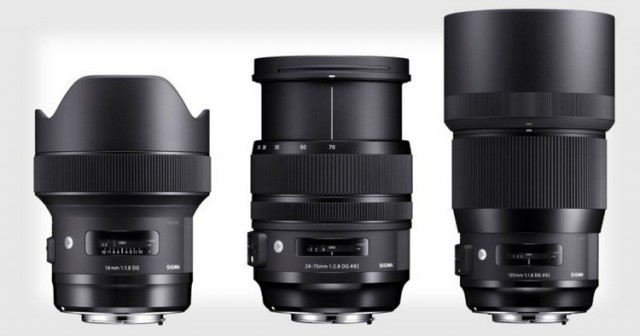
Sigma's 14mm F1. 8 Art lens makes it easier to get shots like this. ISO 5000 | 2 seconds | F1. 8 | 14mm Over the past couple years I've developed a strong interest in wide-field astrophotography.
Specifically, I've become passionate about photographing the aurora borealis, commonly known as the northern lights.
The aurora is Mother Nature's own special effects show, and it's one of those things that makes you stop to just appreciate the magic of the universe. No photo, IMAX screen, or VR headset will ever replicate the experience of standing under the sky when she flips on the light switch, but maybe that's why I'm so drawn to aurora photography in the first place: it requires me to go to where I can experience the magic in person.
There are a lot of good lenses out there for this purpose, and I've used quite a few of them including the legendary Nikon 14-24mm F2. 8, the Rokinon 14mm F2. 8, the Venus Optics Laowa 15mm F2, various 16-35mm F2. 8 variants, and even Sigma's own 20mm F1. 4 Art, but once I tried the Sigma 14mm F1. 8 it was game over. I knew I had found the one.
ISO 1600 | 3. 2 seconds | F1. 8 | 14mm
One thing you learn quickly when shooting aurora is that you need fast, wide lenses. Fast because you're shooting at night (duh). Wide because the aurora typically covers a large portion of the sky. It also makes it easier to include some landscape to provide a sense of place. This is where the Sigma 14mm F1. 8 Art lens comes in.
What makes this lens so special is the fast F1. 8 aperture. That's 1. 3 EV faster than an F2. 8 lens. Put another way, wide open the Sigma 14mm has a 2. 5x light gathering advantage over F2. 8 lenses. That's huge.
One challenge when photographing the aurora is that it can dance around surprisingly fast at times. Even at high ISO values an exposure may be on the order of several seconds, making it difficult to capture the intricate structure you often see in person. That's part of the reason time-lapse sequences never look as good as the real thing.
ISO 3200 | 5 seconds | F12. 8 | 14mm
Using the Sigma 14mm, however, I can cut my exposure time significantly. Where the Nikon 14-24mm F2. 8 might require a 6 second exposure, the Sigma lets me get away with 2. 5 seconds. Still not enough to freeze the action, but enough to reduce the degree to which patterns and structure in the aurora get averaged out.
Conversely, there are times when the aurora moves slowly and I'm not too concerned about shutter speed. In that case, I can lower my ISO significantly, say from 6400 to 2500, in order to get higher quality images.
But wait, there's more! This lens even makes it easier to focus in the dark. I typically use live view to focus on a bright star. Sounds easy, but sometimes it's not. The extra light at F1. 8 makes this easier, making shooting more fun.
Blah, blah, blah. . . That all means squat if the photos don't look good. Thankfully, this lens has great image quality.
ISO 6400 | 1. 3 seconds | F1. 8 | 14mm
Wide open there's some comatic aberration, which causes point sources of light near the edge of the frame to look distorted, but unless your viewer is pixel-peeping they probably won't see it. I suppose if I were an astro purist, and the stars were the main subject of my photos, I might get a bit persnickety about this, but I'm not, so I don't.
There's also noticeable vignetting wide open, but it's a smooth transition to the edges, and I've generally been able to correct for it effectively in Lightroom. Again, astro purists will probably cringe at this, but for aurora photos it works great.
If there's any significant downside to this lens, it's that it's both big and heavy. This is one place where Sigma's 'Make the best optic possible and size be damned' design approach is visible. Put a couple of these in your pack and you're going to feel it. (Then again, some of those other lenses I mentioned above are pretty big as well. )
I'm looking forward to doing a lot more aurora photography in the future, and I'll be doing much of it with this lens. It's going to take a lot to displace it from my camera, which is why it's my 2017 gear of the year.
Sigma 14mm F1. 8 Art sample galleries
Sample gallery
$(document). ready(function() { SampleGalleryV2({"containerId":"embeddedSampleGallery_5251445179","galleryId":"5251445179","isEmbeddedWidget":true,"standalone":false,"selectedImageIndex":0,"startInCommentsView":false,"isMobile":false}) });
Astrophotography sample gallery
$(document). ready(function() { SampleGalleryV2({"containerId":"embeddedSampleGallery_9309803257","galleryId":"9309803257","isEmbeddedWidget":true,"standalone":false,"selectedImageIndex":0,"startInCommentsView":false,"isMobile":false}) });. dpreview.com
2017-12-1 17:00















